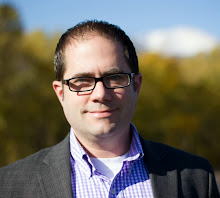In the summer of 1906 there stood a reclaimed and whitewashed two-story factory building on the wrong side of the tracks in Los Angeles. If you were to walk inside at almost any time of the day or night you would behold some pretty amazing sights. A few fans hung from the ceiling, some wooden planks had been turned into pews, and there were a couple of old crates in the middle of the room turned on their sides and used as pulpits. There was a constant stream of people in and out of the building. They were praying, singing, and worshiping God in all kinds of languages. You would certainly notice something almost unheard of in its time-there was no visible segregation in any way. The rich and the poor, the children of slaves and the Oriental railroad workers were all in the same pews, apparently not aware that they shouldn’t be. One reporter who covered the Azuza Street revival remarked, “The ‘color line’ was washed away in the blood.”
Another notable detail that might have caught your eye was the man who appeared to be the leader. He was on the platform with a shoebox-on his head. From time to time he would remove the box, approach the makeshift pulpit, preach what God had planted on his heart, and then return to his seat and replace the shoebox-on his head. William J. Seymour, himself the son of a slave, was at the heart of the revival that shook the world of his day.
As a century has passed and pastors and theologians have looked back at Azuza Street, there have been many reactions. Most of them have focused on the shoebox-maybe not just the shoebox, but all the things that came with the revival that were shoebox-like. Many have mocked and rejected the Pentecostal movement because of its roots in Azuza Street, and others have tried their best to carry on the spirit of the revival. Unfortunately, what many people in this second category have carried on is the shoebox.
It is almost axiomatic in pastoral circles that if you have something that is working for you, you need to bottle it, write a book, and take your show on the road. What William J. Seymour did was write. And what he wrote about might surprise a lot of people who look back at all the shoeboxes of Pentecost-he wrote about love. What Seymour sought in Pentecost was not the signs or the wonders, and he certainly did not seek notoriety or fame for himself. What he sought out, and what he wanted others to see, was the life-transforming love of Jesus Christ.
Despite the scoffers, those who reject Pentecost, and those who try to turn a buck at its expense, Seymour watched the active presence of the Holy Spirit begin to transform the world around him by the power of God’s love.
In the events of Acts chapter 2, we have a clear and concise example of what the moment of Pentecost did to the church. On that very first day of the life of the church, what did it mean for them to be Pentecostal? In what follows, we will look at three sweeping themes of the chapter.
First: Pentecost empowered the church to glorify God in a way people could understand.
The obvious miracle of Pentecost was the act of speaking in tongues. But what it accomplished was the drawing of a crowd who then heard God glorified in their own native languages. Their curiosity was piqued; some wanted to know more about what was going on, and others were unable to grasp enough of what was happening, so they mocked the disciples.
How well is the world able to understand or translate the church? Do they know why we are here and why we do the things we do? A book I read recently made the point that there are dozens of churches in our culture who have a regional, national, or international reputation, but the people who live across the street have no idea what that church is all about.
Second: Pentecost empowers the church with the wisdom and strength it needs to fulfill Christ’s mission here on earth.
You might say that just moments before Acts 1:4, Peter still didn’t ‘get it.’ He and the other disciples still did not understand why Christ came. They still thought the Kingdom of God was a matter of human political and military institutions. But the moment the Holy Spirit came upon them, they understood to a much greater degree what the Kingdom was all about.
And in the face of even a little persecution, the disciples stood their ground and proclaimed Christ. Don’t forget that these are the same disciples who, just a few weeks earlier (even after beholding the empty tomb-John 20), were locked in a room with the windows shut.
Third: Pentecost empowers the Church to change the world through the lives of transformed believers.
The final section of Acts 2 describes a radically changed group of people. And the transformation was not trite. It was not just that mean people were now nice, and gruff people were now spunky. These people now saw everything differently. The rich no longer viewed their position as one of privilege, the poor no longer saw theirs as one of loss; they saw the way they ate differently; they viewed money differently; everything had been transformed.
Besides these transformed lives, the early church had nothing-no money, no buildings, no prominent political figures-nothing. But in the lives of the believers they did have the one thing every church desperately needs, and is so longing to have-the empowering and transforming presence of the Holy Spirit.
Monday, May 16, 2005
Subscribe to:
Post Comments (Atom)

No comments:
Post a Comment